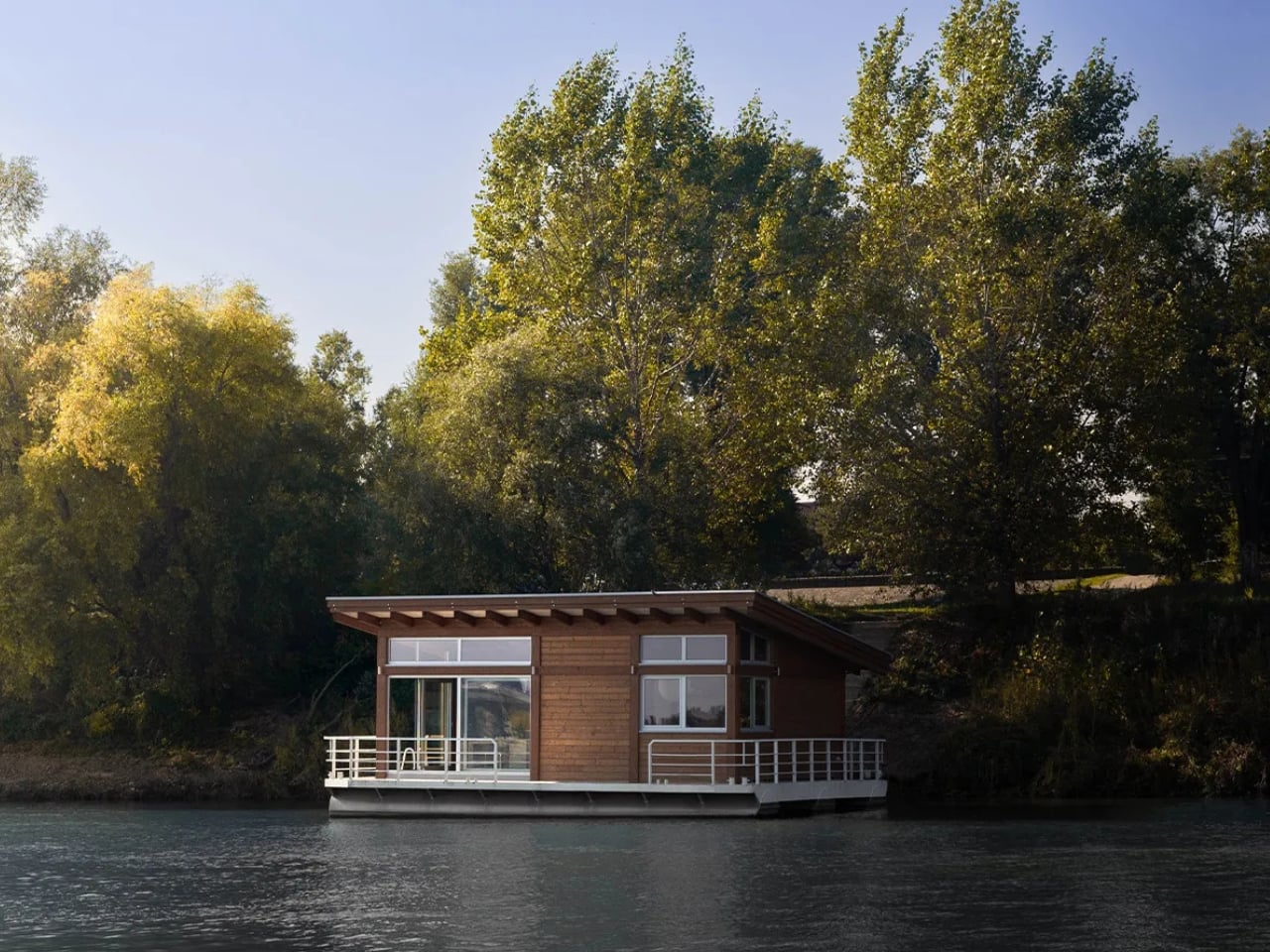
If I would someday win the lottery, one of the things that I would allot my winnings to is to build a vacation house somewhere along the river or any scenic area. Just the idea of having somewhere to retreat to when city life becomes too overbearing would be a comfort to me and my loved ones. For now, I would have to live vicariously through the designs I see, like this one created for a couple in Serbia by Aleksandar Stanković of studio MARSA.
This floating cabin is located on a stationary pontoon along the Sava River in the Sava Shipyard, one of the most renowned shipyards in the region. Measuring eight-by-six meters, this compact yet thoughtfully designed structure maximizes every inch of space. It is an open-concept structure that is created for leisurely afternoons, weekend stays, and intimate gatherings for their family and friends. All elements of the design are meant to give the family a peaceful retreat and haven from the daily grind.
Designer: Aleksandar Stanković of studio MARSA (photos by Ivana Petrov)
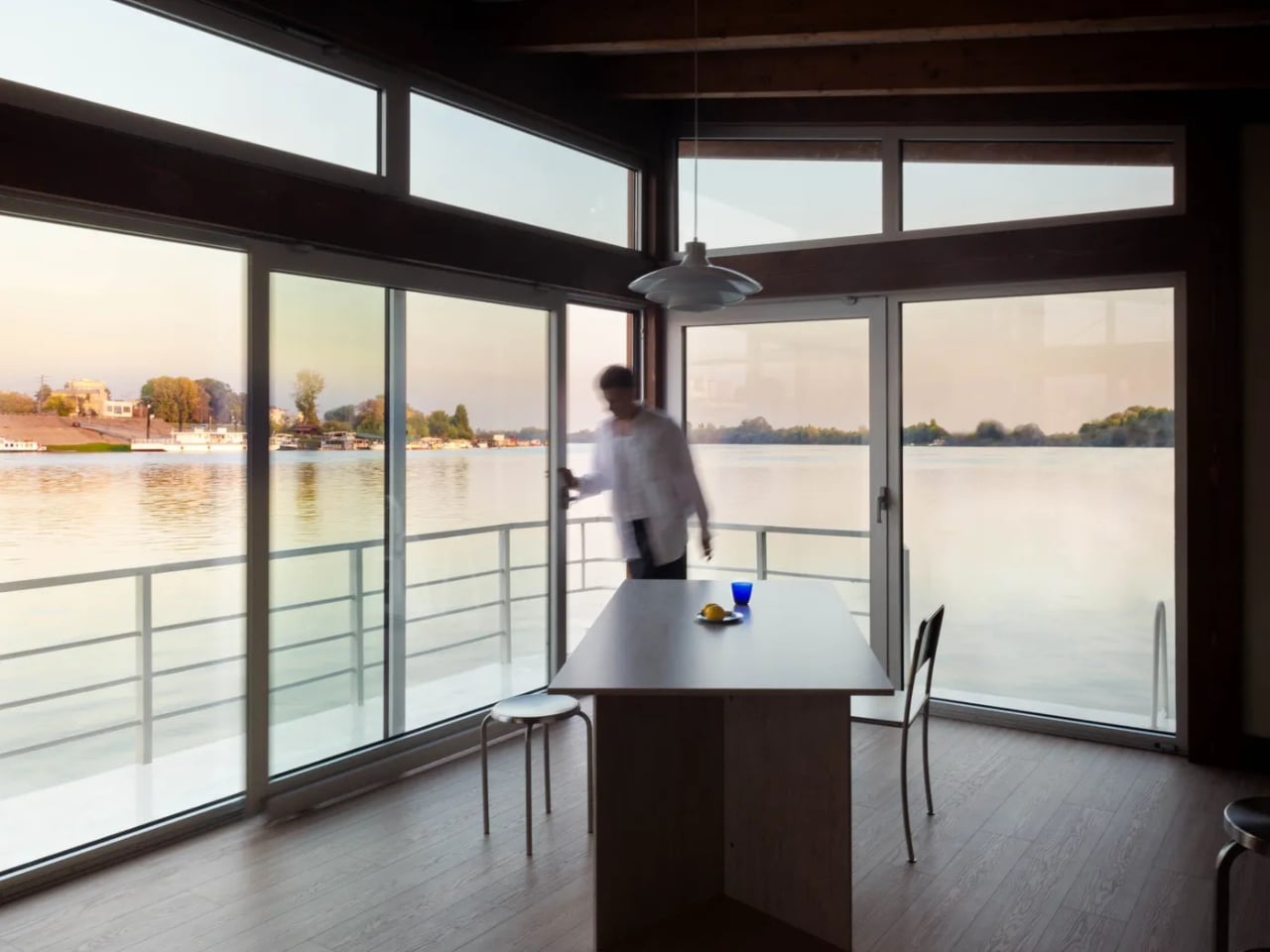
The design is inspired by the riverside setting and the old shipyards in the area, paying tribute to the maritime heritage of the site. It uses a combination of wood and metal, giving off a textural contrast and adding to the charm of the cabin. You get deep greens to mirror the water hues and red accents as a nod to nautical navigation markers. This way, you have an honest, grounded aesthetic to mirror the landscape where the retreat stands on.
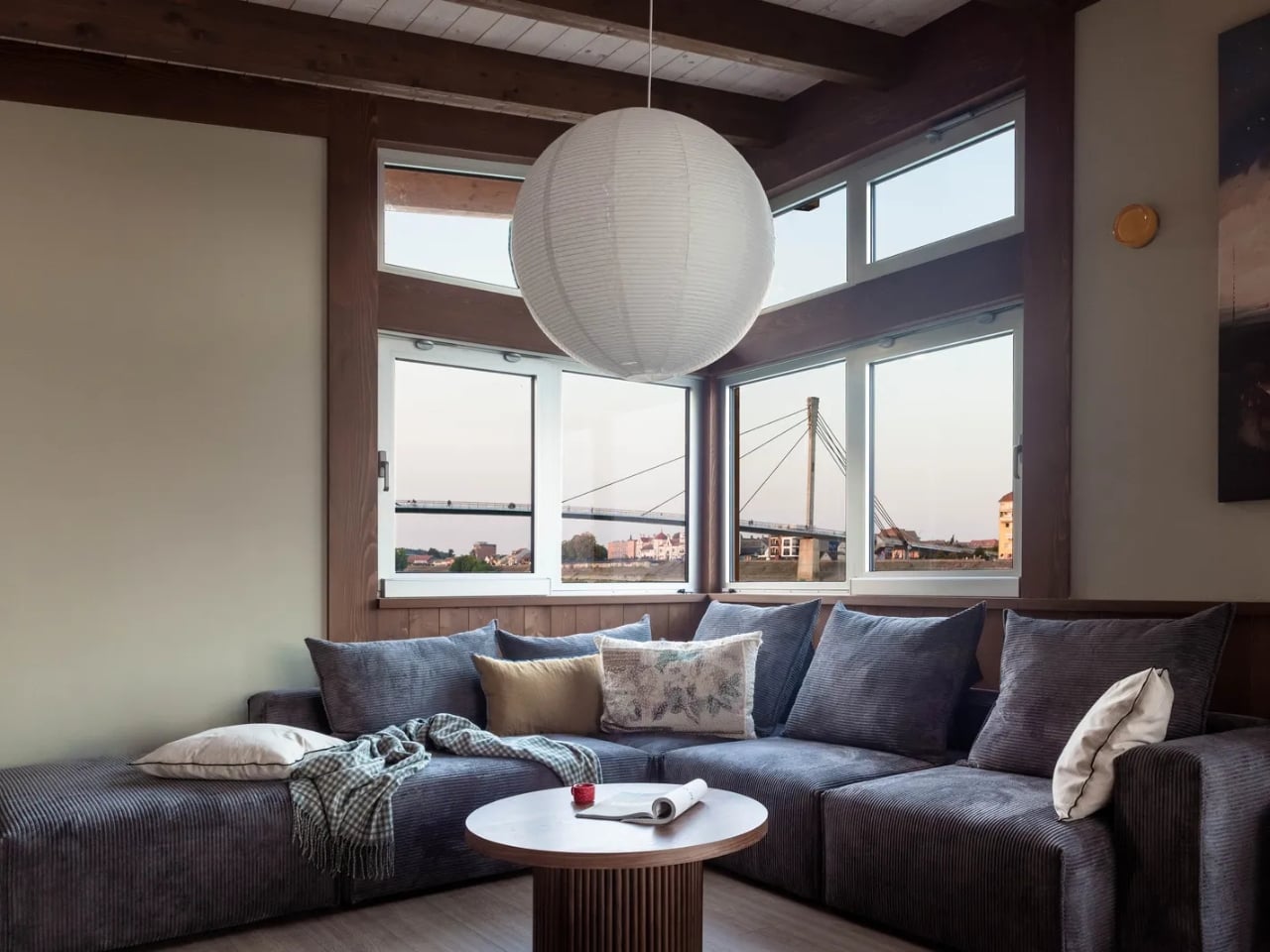
The architectural language of the cabin speaks to its unique floating nature. The stationary pontoon provides a stable foundation while maintaining that gentle connection to the water’s movement. The structure’s proportions were carefully calculated to balance comfort with the intimate scale appropriate for a riverside retreat. The exterior showcases a disciplined palette that allows the cabin to feel both contemporary and timeless, never competing with its natural surroundings.
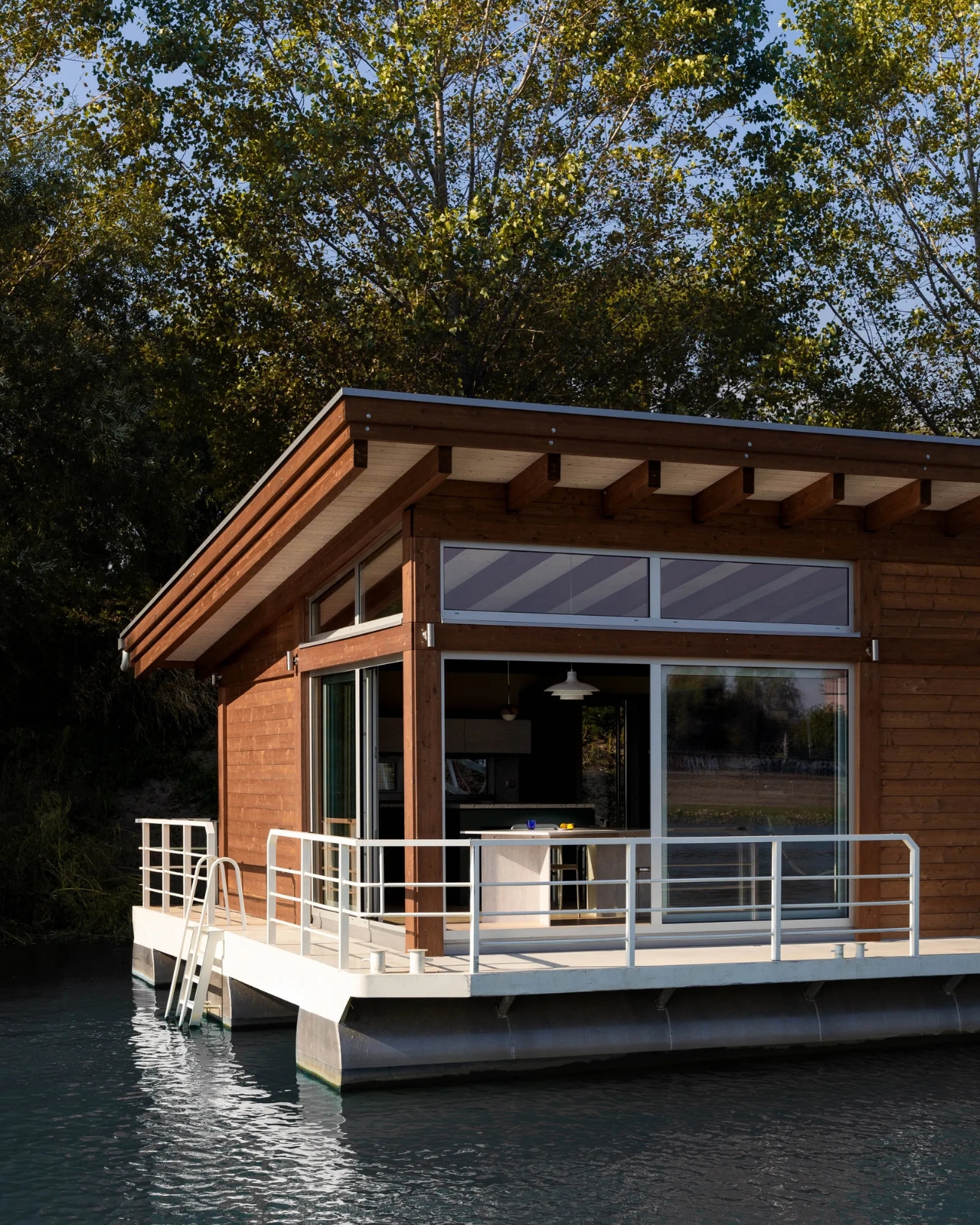
Inside, you get light-filled spaces that blur the line between being indoor and outdoor. The open-concept layout eliminates unnecessary walls, creating fluid spaces where the family room seamlessly transitions from one activity zone to another. It also highlights the riverside location by providing carefully framed scenic views from within. Large windows act as living paintings, capturing different perspectives of the Sava River throughout the day, from morning mists to golden-hour reflections. You’re connected to your surroundings while also creating a calm haven to get you away from your normal life, emphasizing a floating and peaceful feeling for everyone, whether it’s daytime or when it’s illuminated at night.
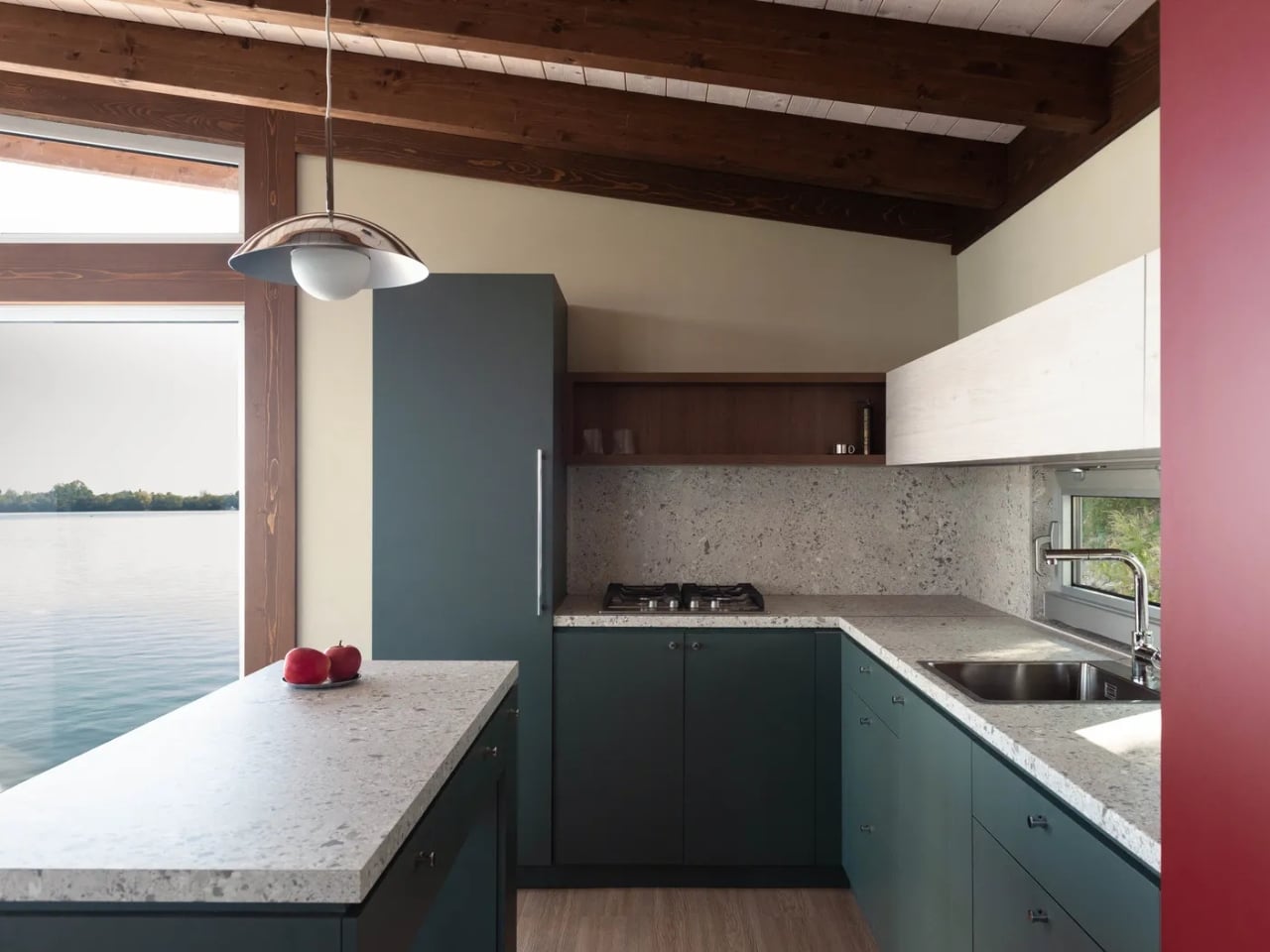
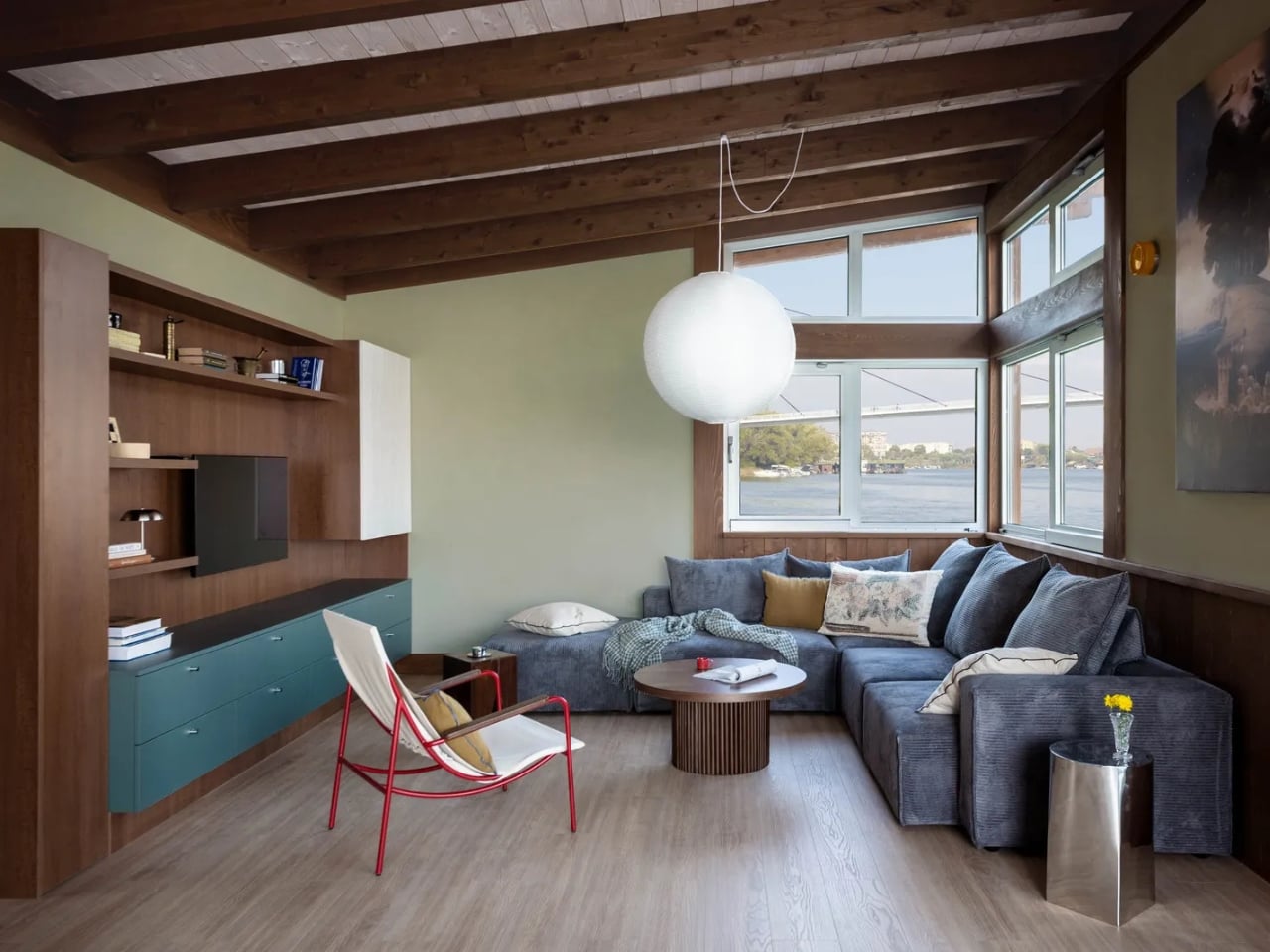
The interior features continue the nautical theme with sculptural quality and attention to detail. Dark cabinetry grounds the space, while the interplay of textures (smooth metal fixtures against warm wood surfaces) creates visual interest without overwhelming the compact footprint. Every element serves dual purposes: beauty and function coexist in perfect harmony. The thoughtful material choices extend to every surface, creating a cohesive environment where you can truly unwind. Imagine spending your afternoons here with a good book, watching the river flow by, or gathering around the table for long conversations with friends over wine and home-cooked meals.
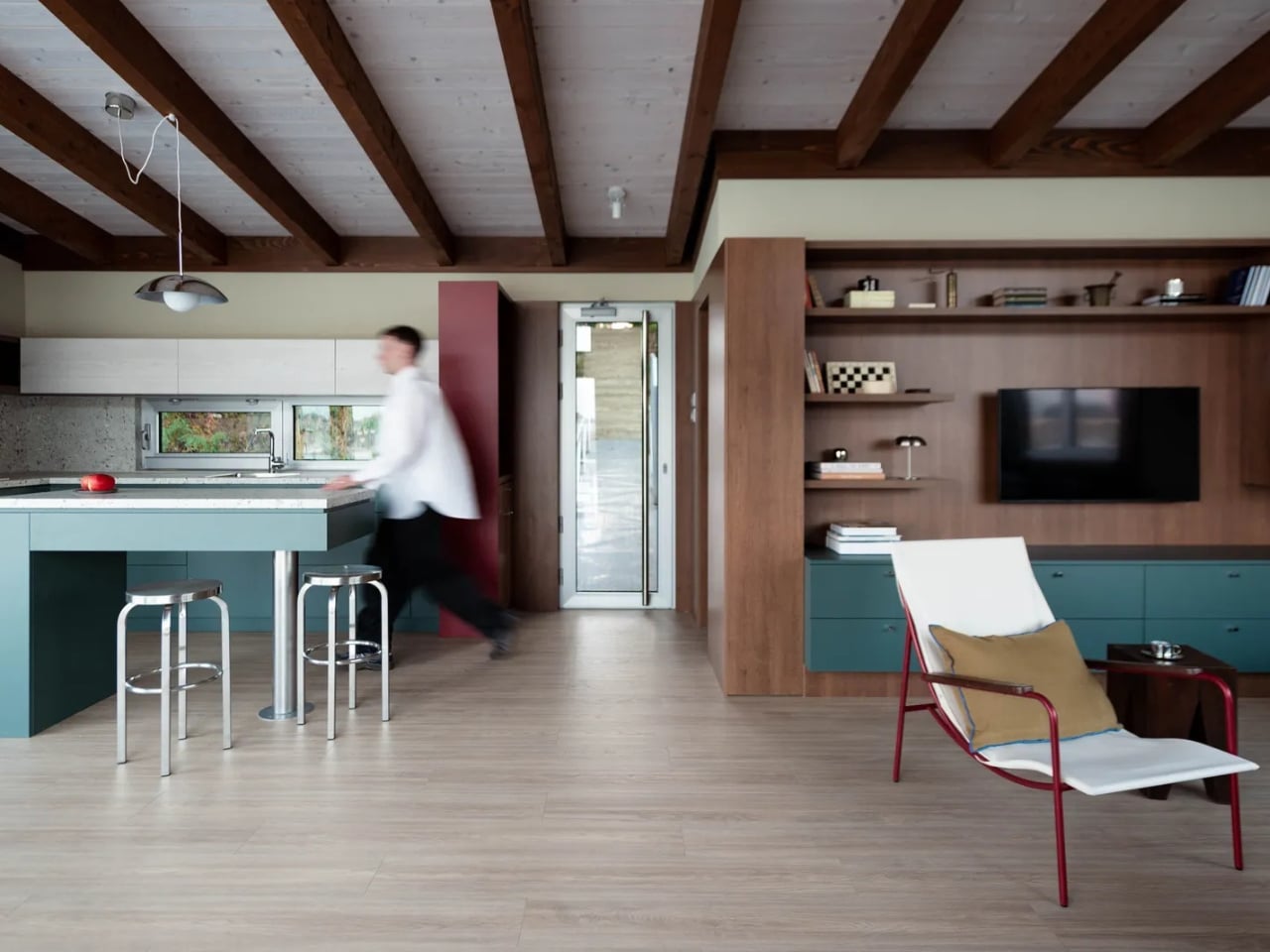
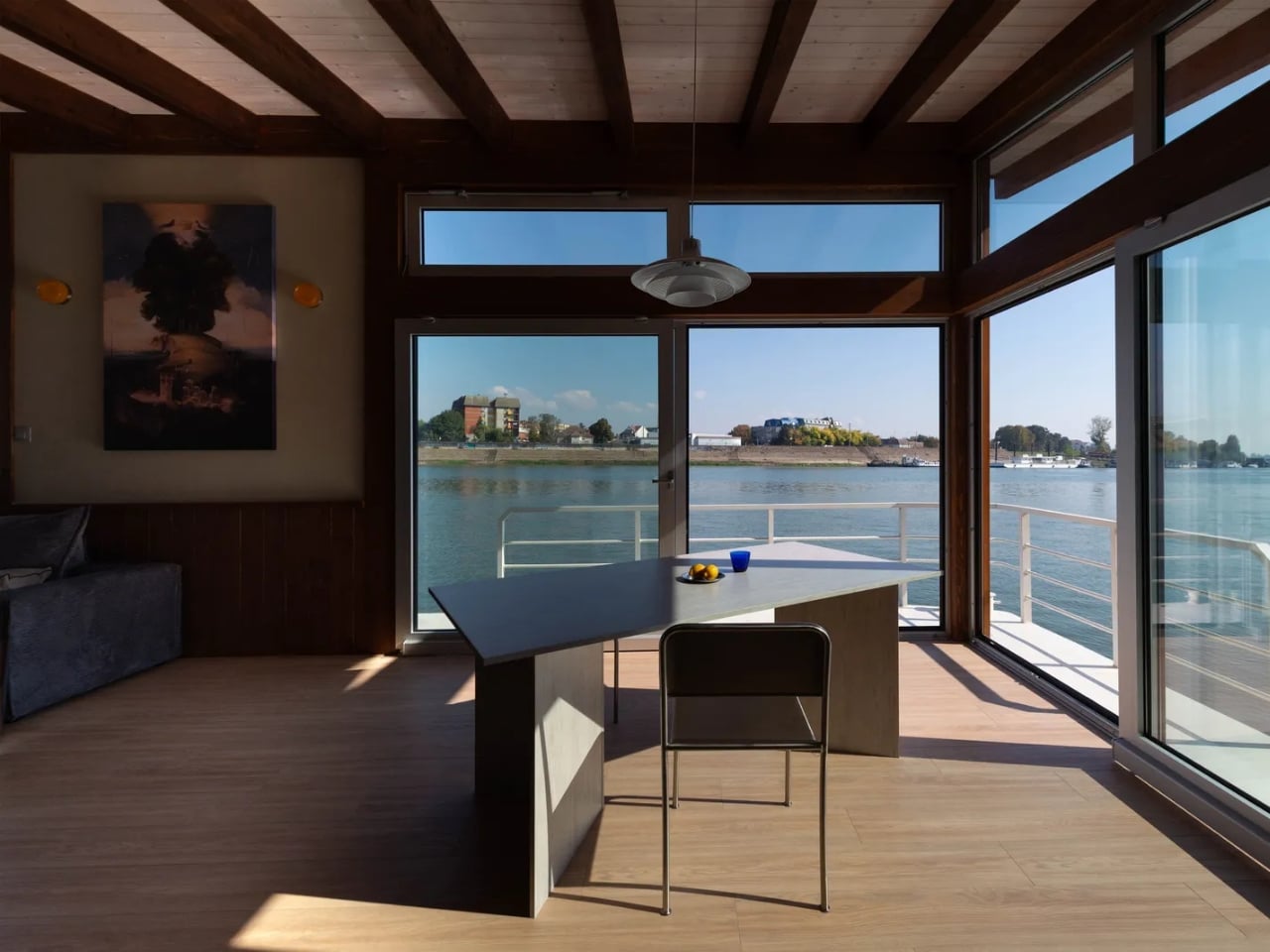
This marks a homecoming of sorts for Serbian-born Stanković, who’s an architect and designer based in London. He collaborated with local Serbian engineers and contractors for this project, showcasing local craftsmanship and expertise. Notably, this is the very first completed project by Studio MARSA, making it a significant milestone in the studio’s portfolio and a testament to Stanković’s vision.
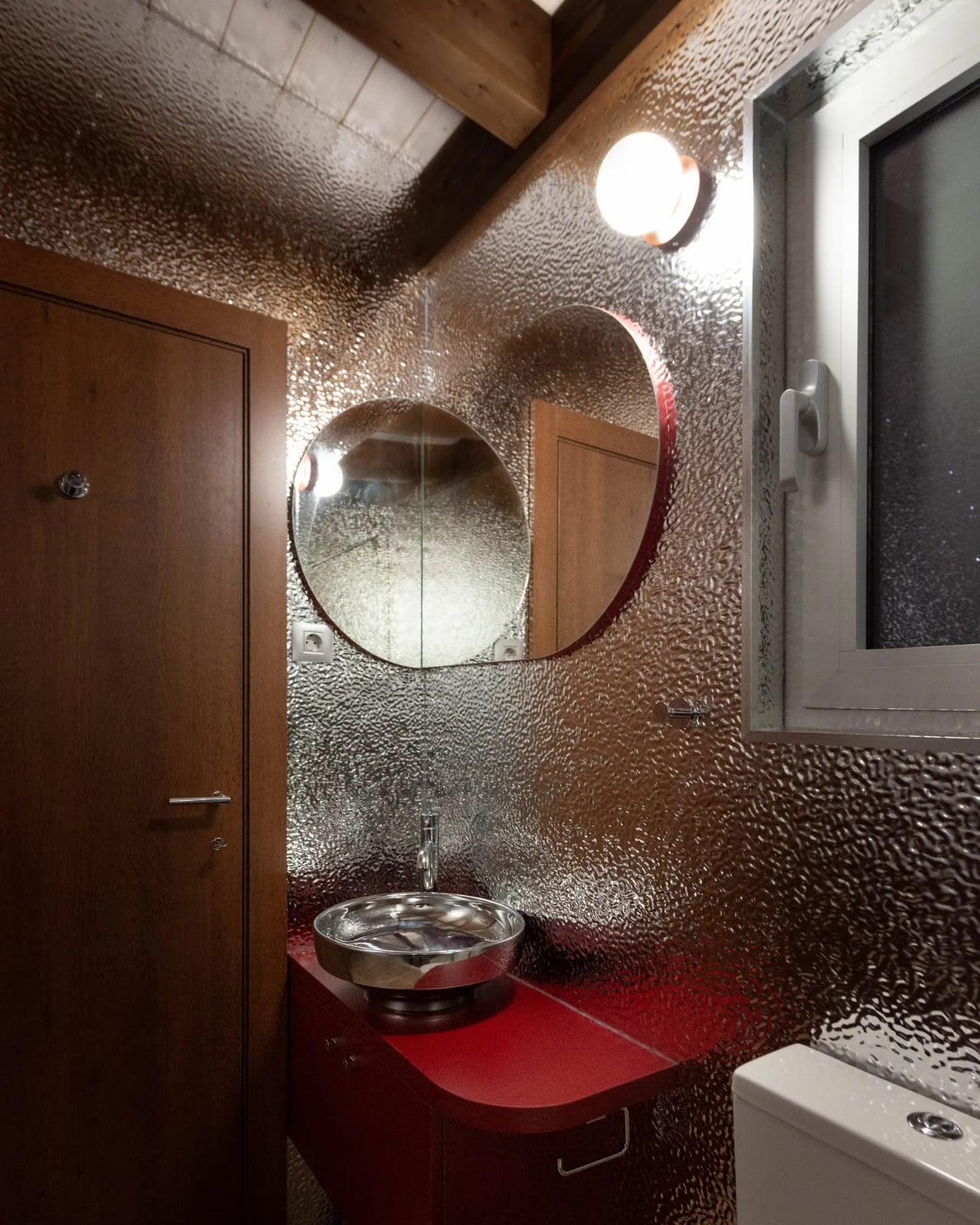
The Sava River cabin is a project that blends functionality with poetry since it can be both a practical weekend retreat for the family as well as a thoughtful meditation place where heritage and nature come together.
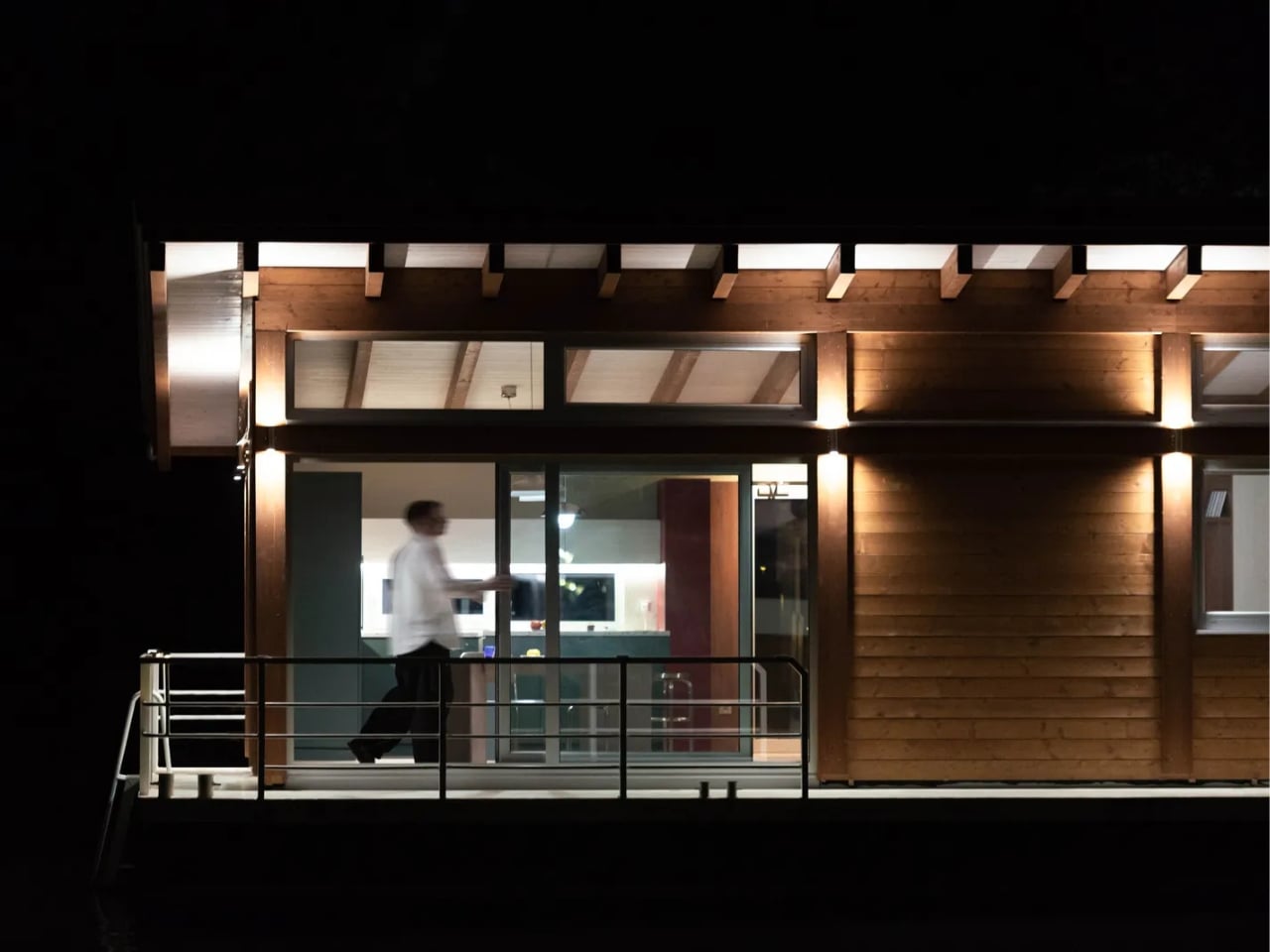
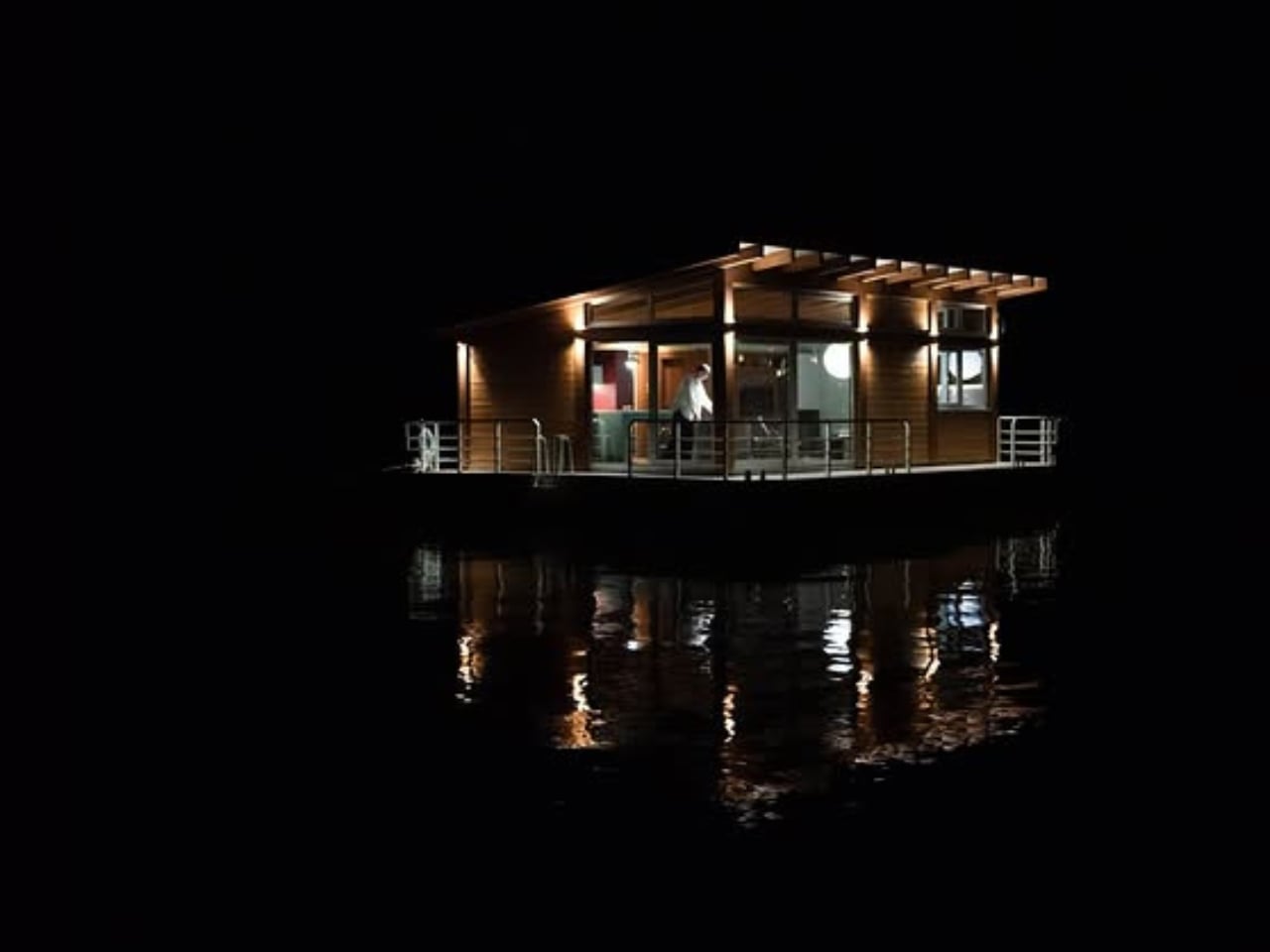
The post This Floating River Cabin in Serbia Is Our Dream Weekend Escape first appeared on Yanko Design.